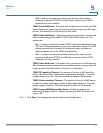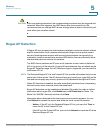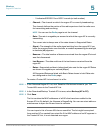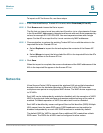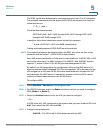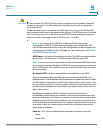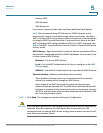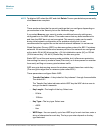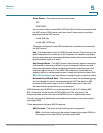
Wireless
Networks
Cisco Small Business WAP551 and WAP561 Wireless-N Access Point 73
5
NOTE To delete a VAP, select the VAP and click Delete. To save your deletion permanently,
click Save when complete.
These sections describe the security settings that you configure, depending on
your selection in the Security list on the Networks page.
If you select None as your security mode, no additional security settings are
configurable on the WAP device. This mode means that any data transferred to
and from the WAP device is not encrypted. This security mode can be useful
during initial network configuration or for problem solving, but it is not
recommended for regular use on the internal network because it is not secure.
Wired Equivalent Privacy (WEP) is a data encryption protocol for 802.11 wireless
networks. All wireless stations and access points on the network are configured
with a static 64-bit (40-bit secret key + 24-bit initialization vector (IV)) or 128-bit
(104-bit secret key + 24-bit IV) Shared Key for data encryption.
Static WEP is not the most secure mode available, but it offers more protection
than setting the security mode to None (Plain-text), as it does prevent an outsider
from easily sniffing out unencrypted wireless traffic.
WEP encrypts data moving across the wireless network based on a static key.
(The encryption algorithm is a stream cipher called RC4.)
These parameters configure Static WEP:
• Transfer Key Index—A key index list. Key indexes 1 through 4 are available.
The default is1.
The Transfer Key Index indicates which WEP key the WAP device uses to
encrypt the data it transmits.
• Key Length—The length of the key. Select one:
- 64 bits
- 128 bits
• Key Type—The key type. Select one:
- ASCII
- Hex
• WEP Keys—You can specify up to four WEP keys. In each text box, enter a
string of characters for each key. The keys you enter depend on the key
type selected:



